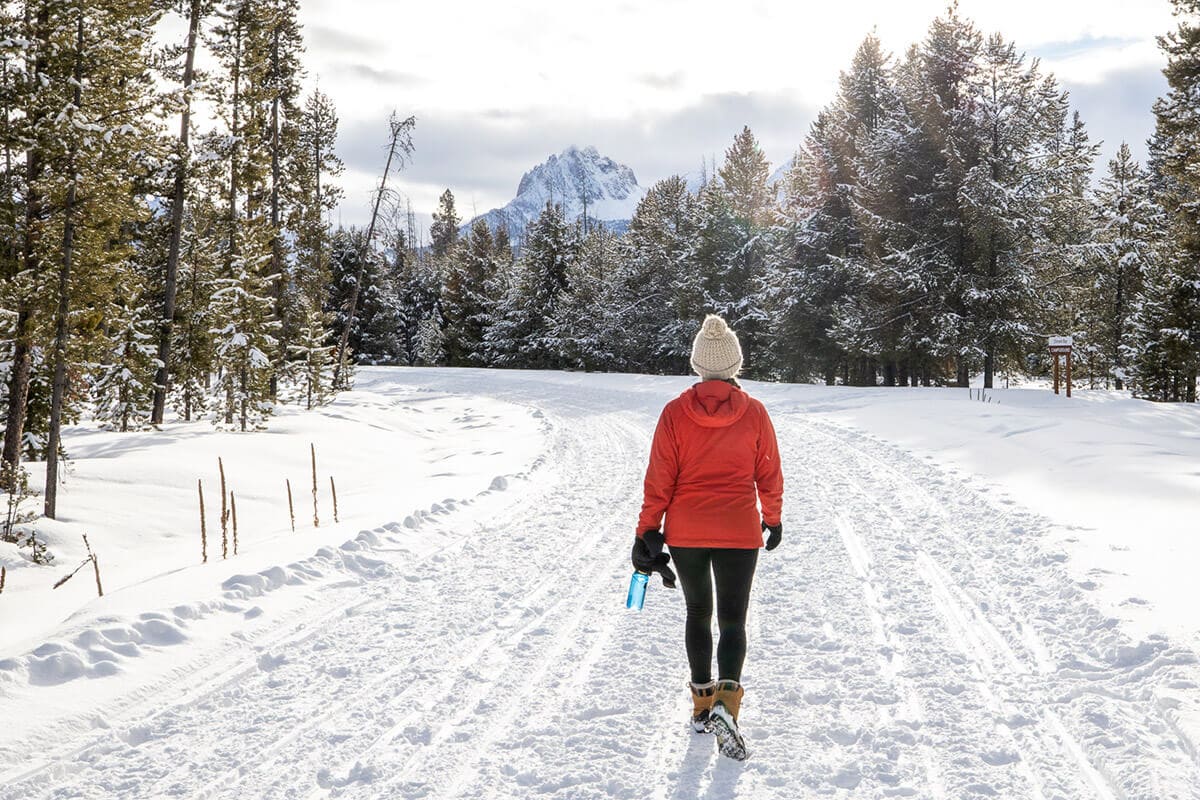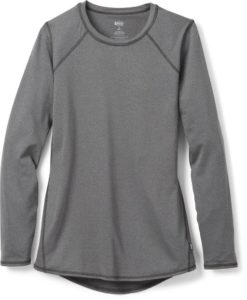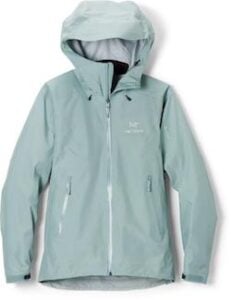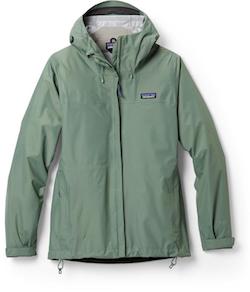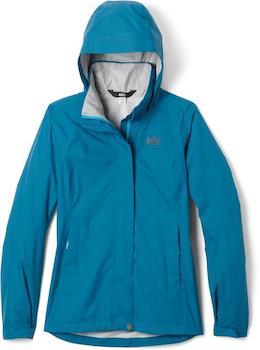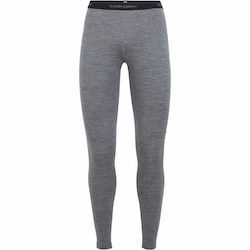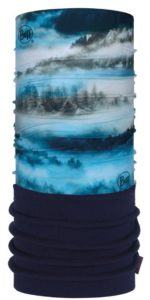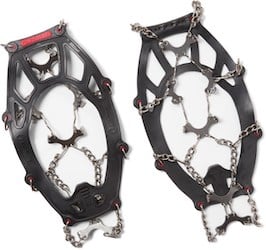Products You May Like
Choosing the right winter hiking clothes is important for comfort and safety out on the trail. But layering properly for cold weather is a fine balancing act. If you overdress for a winter hike, you end up hot and sweaty (which ironically can leave you cold).
On the other hand, if you don’t wear enough layers, you could end up shivering and miserable, which can lead to hypothermia in extreme cases. Neither of these scenarios leads to a fun winter hiking experience, which is why layering and being prepared for wet and chilly weather is critical when exploring the outdoors in the winter months.
In this blog post, we help you prepare with the winter hiking gear and essentials you’ll need and share tips for layering for cold, snowy weather so you can get out there in comfort.
Winter Hiking Clothes Layering Basics
The key to dressing for winter hiking is to wear layers that will keep you both warm AND dry – and that means from the elements as well as your sweat. Depending on the difficulty of the trail and weather conditions, you may find yourself needing to take off and put on layers throughout the hike in order to stay comfortable.
For example, on the uphill sections, if you start getting hot, stop and shed a layer before you get sweaty since sweat can ultimately make you feel wet and cold. Once you reach the high point of your winter hike and start going downhill, you might need to add a layer since you won’t be producing as much body heat. It might feel annoying to have to stop and adjust, but you’ll thank yourself later and it’s easy if you keep the layers you need easily accessible.
Once you have a few winter hikes under your belt, you’ll see how much heat your body generates, and then you can adjust your cold-weather hiking clothes accordingly.
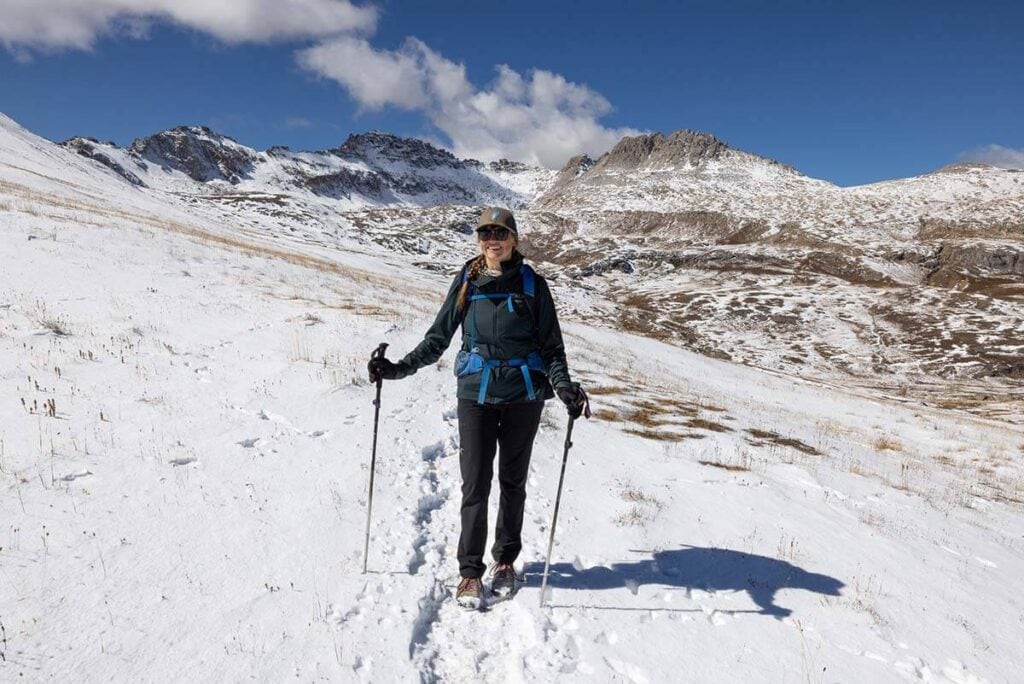
It’s also always a good idea to throw more than you think you’ll need into your hiking daypack. If you end up walking mostly in the shade with the sun behind the mountains or the wind picks up, you’ll be happy to have extra layers.
For winter layering, the main layers you’ll need on your upper body are:
- Next-to-skin base layer
- Insulating layer
- Weatherproof shell
You may choose to wear your next-to-skin base layer and your insulating layer or maybe just your base layer and your weatherproof shell. Or you may wear all three. It just depends on the conditions and your body temperature.
Ideally, you want to choose layers that are light and packable so you can stuff them in your backpack if you decide to take one off.
On your lower body, the layers you’ll likely need are:
- Next-to-skin base layer
- Weatherproof shell pants
- Warm hiking socks
- Waterproof hiking shoes
You’ll also want to pack some winter hiking accessories like gloves, a warm hat, and possibly microspikes or snowshoes.
Below we go over the details of each layer and include recommendations for each winter hiking layer.
Upper Body Winter Hiking Layers
Next to Skin Baselayer
Your next-to-skin winter hiking base layer is all about regulating your body temperature while also wicking sweat. You sweat when you’re active, and in winter months it’s extra important that your winter hiking clothes help move the perspiration away from your skin so you stay dry, rather than damp and cold.
Base layers should be made of synthetic fabric or merino wool that wick moisture and dry quickly. Avoid anything cotton (t-shirts, cotton sweatshirts) because cotton stays damp and heavy and loses its insulating properties when wet. This also applies to your sports bra.
The thickness of your next-to-skin baselayer depends on how cold it is outside and is also based on personal preference. Some people prefer to wear a lightweight synthetic exercise t-shirt underneath a mid-weight base layer. Others are fine with a single lightweight baselayer. You may have to experiment a bit until you find the system that works best for you.
Lightweight Base Layer Shirt – REI Long-Sleeve Crew Top
This REI Long-Sleeve Crew top a is great lightweight base layer shirt for those of you who run warm.
Check Price: Women’s Version I Men’s Version
Midweight Base Layer Shirt – Icebreaker 260 Tech Long-Sleeve Crewe Base Layer Top
If you tend to run colder, you might choose a mid-weight base layer, like this Icebreaker top, for your next-to-skin hiking layer.
Check price: Women’s Version I Men’s Version
Insulating Winter Hiking Layer
This middle-insulating winter hiking layer is critical for maintaining body heat by trapping air close to your body and providing insulation. Generally, a warm insulating layer will be made of down, synthetic down, or fleece.
Keep in mind that down isn’t warm if it gets wet, and synthetic holds up better in wet weather. If you live in a wet or humid climate, opt for a synthetic alternative to down, like the Patagonia Nano-Puff listed below.
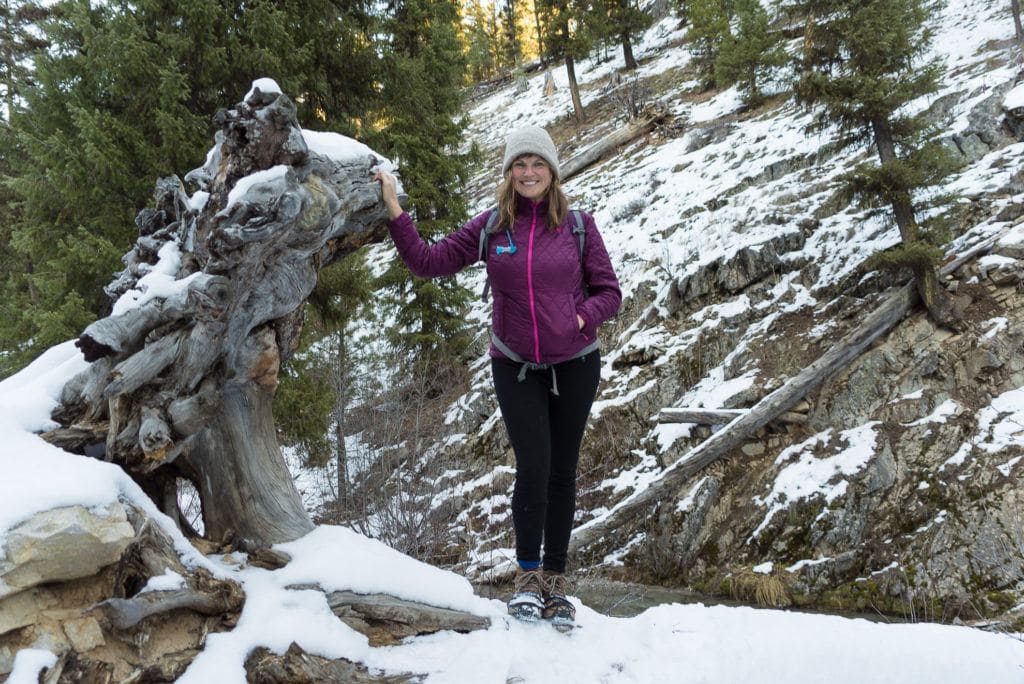
Synthetic Insulated Puffy – Patagonia Nano Puff Hoody
This synthetic Patagonia Nano Puff Hoody is warm, wind-proof, and water-resistant, making it great for snowy climates. As a bonus, it’s made from 100% post-consumer recycled polyester! The hood provides insulation for your head and neck if the wind picks up, although this does come in a non-hooded version as well if that’s your preference.
Check price: Women’s Version I Men’s Version
Synthetic Insulated Jacket – Arc’teryx Atom Insulated Hoodie
The Arc’teryx Atom Insulated Hoodie was one of my all-time favorite jackets, until my puppy Gumbo ate half the sleeve, leaving it unrepairable 🙁 Either way, it’s a fantastic insulated hiking layer that is breathable, packs away small, and has an adjustable hood.
Check price: Women’s Version I Men’s Version
Budget-friendly Down Puffy – REI Co-op 650 Down Jacket
Lightweight, warm, and one of the best deals you’ll find on a down jacket, this REI down puffy is so comfy and packs down into its own pocket. The down is also certified by the Responsible Down Standard which means the animals weren’t subject to cruel and unnecessary practices.
Check price: Women’s Version I Men’s Version
>> Read Next: Best Women’s Synthetic Down Jackets
Fleece Jacket – REI Trailsmith Fleece Jacket
If you tend to run warm or you’re hiking in milder winter temperates, you can replace your insulated jacket with a fleece jacket like the REI Trailsmith.
Fleece jackets aren’t as insulating, but they still provide warmth and they’re nice and cozy. They’re also made from synthetic materials, so they wick sweat to keep you dry.
Check price: Women’s Version | Men’s Version
Weatherproof Shell for Winter Hiking
If there is a chance of sleet, snow, rain, or wind, you’ll want to add an outer shell over your winter hiking clothes. This will protect you from the elements and keep your other layers dry. Look for an outer layer that is waterproof but still breathable as well as packable so you can stuff it in your backpack when you aren’t wearing it. You don’t want a super heavy insulated ski jacket.
One nice feature some weatherproof shells have is armpit vents that zip open when you get hot in order to provide better airflow. You’ll also want to take into account the layers you might be wearing underneath when figuring out what size shell you need.
It’s important to note that high-quality outer layers can be pricey, but keep in mind that these waterproof layers can double as ski jackets or cold-weather raincoats and they should last you for years.
For those of you on a budget, I’ve included a great value REI Co-op brand shell as well. You can also use your normal raincoat. It might not protect you from the wind as well as a winter shell, but it will work as long as your other layers are warm enough.

Gortex Shell – Arc’teryx Beta LT Jacket
If you spend a lot of time in the mountains in a variety of weather conditions, you can’t go wrong with this Arc’teryx Beta lightweight shell. It’s got arm-pit vents, waterproof zippers, and will keep you bone dry.
The Arc’teryx brand in general is a big investment, but everything I’ve ever owned from them has performed wonderfully and lasted for many seasons.
Check price: Women’s Version I Men’s Version
Mid-Range Waterproof Shell – Patagonia Torrentshell 3L
Patagonia is one of our favorite brands because they make great gear out of recycled and eco-friendly materials. I’ve used the Patagonia Torrentshell 3L Jacket for skiing, but it also makes a great layer for winter hikes.
Not only is it fully waterproof, but it also has a lot of other great features like pit zips, a fleece-lined collar, and it packs down into its own pocket with an integrated carabiner for when you start to warm up on the trail.
Check price: Women’s Version | Men’s Version
Budget-Friendly Waterproof Shell – REI Co-op Rainier Rain Jacket
If you aren’t ready to drop a bunch of money on outerwear, this REI Rainier rain jacket will get the job done by keeping you dry if it starts to rain or snow, plus it’s lightweight and packable.
It’s not necessarily intended for winter climates, but as long as you layer properly underneath, this jacket provides a versatile solution for all 4 seasons.
Check price: Women’s Version I Men’s Version
>> Read Next: Best Women’s Rain Jackets
Lower Body Winter Hiking Layers
Next to Skin Baselayer
Just like on your upper body, the next-to-skin base layer on your lower body should help keep you warm while wicking sweat. As with all of your winter hiking clothes, you’ll want to stick to synthetic fabric or merino wool and avoid cotton.
Also, the thickness of your base layer depends on the temperature. On a warm and sunny winter day, a simple pair of hiking leggings might be adequate. On a cold day, you might want a pair of long john bottoms (recommendations below) that you layer underneath a pair of weatherproof pants.
Lightweight Base Layer Bottoms – REI Co-op Lightweight Baselayer Tights
These lightweight, inexpensive long underwear bottoms from REI are made of a comfy polyester blend that stretches as you hike and can be layered under a pair of waterproof pants.
Check price: Women’s Version | Men’s Version
Midweight Merino Base Layer Bottom – Icebreaker 200 Oasis Base Layer Bottoms
For hikers that prefer wool, these Icebreaker 200 Oasis leggings are a go-to piece in my winter hiking clothes. They are so soft, warm, and the wool is certified by the Responsible Wool Standard.
Check price: Women’s Version I Men’s Version
Weatherproof Shell Pants
If it’s wet, windy, or extra cold, you’ll want to layer a second pair of pants on top of your next-to-skin base layer bottoms. You can choose a pair of soft-shell pants that are water and wind-resistant or use rain pants if you’re on a budget.
Weatherproof Pants – REI Co-op Activator 3.0 Pants
These REI Activator 3.0 pants are breathable and stretchy, but are also made with a water-resistant soft fabric, which will keep you dry and warm except on really wet days. You can wear a base layer underneath for extra-cold days.
Check price: Women’s Version | Men’s Version
Winter Shell Pants – Outdoor Research Trailbreaker II Snow Pants
These breathable Outdoor Research Trailbreaker II snow pants are water-resistant on the thighs and waterproof on the lower leg where they are most likely to touch the snow.
With zippered thigh vents, you can better regulate your temperature if you start to heat up while hiking uphill. In addition to being a great winter hiking layer, these pants are also awesome for backcountry skiing, making them a versatile investment.
Check price: Women’s Version I Men’s Version
Winter Hiking Clothes Accessories
A warm hat, gloves, Buff, and other winter hiking accessories are just as important as the rest of your winter hiking clothes for keeping you comfortable. As you warm up, you can adjust, and when you get cold, you’ll be happy you have these extra accessories to layer on.
Below I share my favorite accessories that I always pack for cold-weather layering.
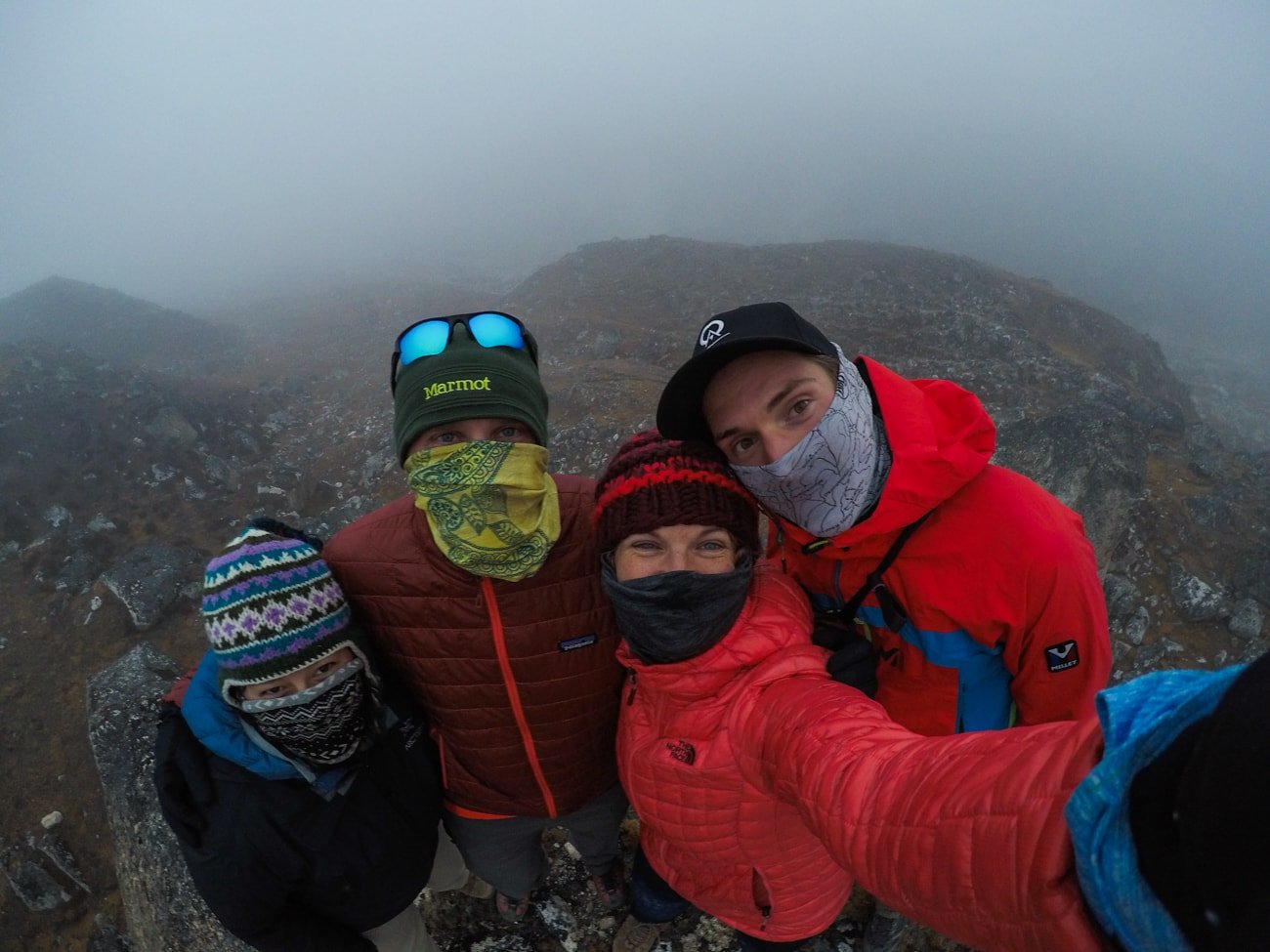
Buff – Polar Multifunctional Headwear
A buff is always a good idea for keeping the wind, cold air, and sun from hitting your neck and face directly, and this one’s got cozy fleece at the base.
Check price: REI
Sunglasses – SunCloud Mayor Polarized Sunglasses
Sunlight reflects off the snow so it’s smart to protect your eyes with polarized sunglasses when hiking in the winter.
Check price: REI
Gloves – Outdoor Research Flurry Sensor Gloves
My hands tend to get hot when I’m hiking uphill, but as soon as I turn around and start to go down, my fingers get really cold. These Outdoor Research Flurry fleece-lined gloves keep them warm, and they are touchscreen compatible allowing me to take photos on my phone without having to take them off.
Check price: Women’s Version I Men’s Version
Beanie – REI Co-op Logo Beanie
A hat is especially important because you lose a significant amount of heat through the top of your head. This is a simple REI beanie that can be worn on any type of winter adventure and can be easily stuffed in your pack.
Check price: REI
Winter Hiking Footwear
Wearing appropriate winter hiking footwear is super important for keeping your toes warm and your feet nice and dry as you walk through the snow. Here is what I wear on my cold weather hikes.
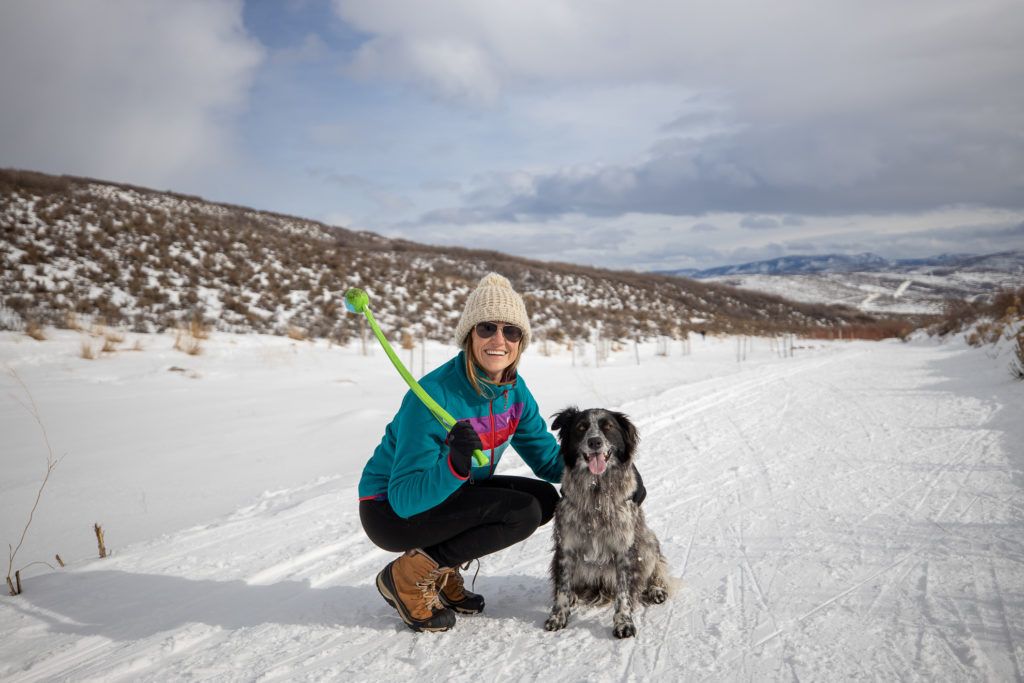
Winter Hiking Boots – Oboz Bridger Insulated Waterproof Boots
The Oboz Bridger Insulated waterproof hiking boots provide essential traction, plenty of support, and contain 3M Thinsulate in order to keep your feet as warm as possible while winter hiking. With the high cuff, they also keep snow out making them a great option in wintery climates.
Check price: Women’s Version | Men’s Version
>> Read Next: Do You Need Waterproof or Non-Waterproof Hiking Boots?
Winter Hiking Socks – Darn Tough Mountaineering Socks
Just like the rest of your winter hiking clothes, you’ll want to avoid cotton socks. Instead, choose wool socks or synthetic material that wicks sweat.
Darn Tough is my favorite sock brand and their Mountaineering Socks go over the calf and are thicker than their normal hiking socks for added warmth.
Check price: Women’s Version I Men’s Version
Gaiters – Black Diamond GTX Front Point Gaiters
Depending on how high your boots go and how deep the snow is, you may want to wear a pair of gaiters, like the Black Diamond GTX Front Point. They slip over your shoes, and their purpose is to keep the snow out of your shoes and socks.
Check price: REI
Microspikes – Kahtoola MICROspikes Traction System
If you’re anticipating the trail being icy, I highly recommend packing these sturdy Kahtoola Microspikes. They easily attach to the bottom of your shoes, and the spikes on the bottom help grab on to slick and icy terrain, which ultimately helps you feel more confident when you’re winter hiking.
You can purchase burlier crampons, but those are typically only needed for mountaineering or ice climbing.
Check price: REI
Snowshoes – Atlas Helium MTN Snowshoes
If you will be hiking in deep snow, a pair of snowshoes can make all the difference. Snowshoes are designed to keep you on top of the snow rather than post-holing with each step.
The Atlas Helium MTN Snowshoes are a highly rated pair of snowshoes designed for snowy hikes and moderate winter adventures.
Check price: REI
>> Read Next: Beginner’s Guide to Snowshoeing
Related Blog Posts:
We hope these tips and recommendations for winter hiking clothes help you plan and prepare for an awesome cold-weather hiking adventure! Got questions? Leave them below in the comments.

